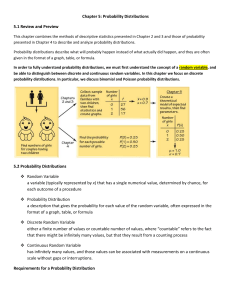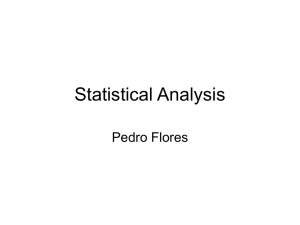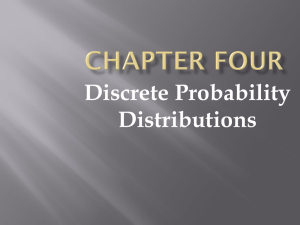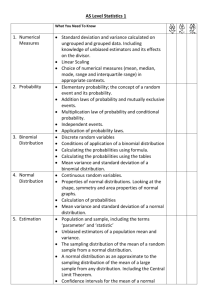Binomial, Hypergeometric, Negative Binomial Distributions
advertisement
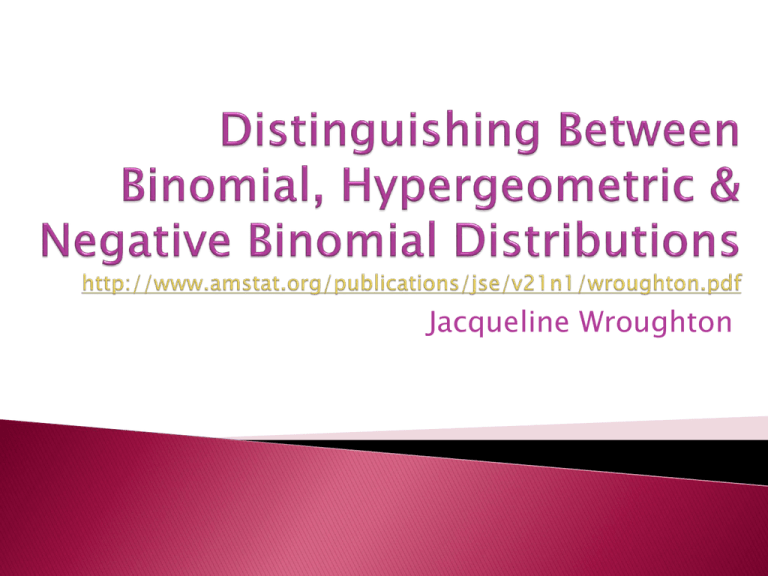
Jacqueline Wroughton 1. 2. 3. 4. 5. There are n set trials, known in advance Each trial has two possible outcomes (success/failure). Trials are independent of each other. The probability of success, p, remains constant from trial to trial. The random variable, Y, is the number of successes out of the n trials. Note: p vs. “conditional p” Probability Mass Function n y f ( y; n, p) p (1 p) n y y y 0,1, 2, ..., n . Expected Value & Variance E (Y ) np Var(Y ) np(1 p) All but condition 3 of the Binomial Conditions hold. (Without replacement) Probability Mass Function Expected Value & Variance All but condition 1 and 5 of the Binomial Conditions hold. Probability Mass Function Expected Value & Variance Students appeared to conceptually “get it”. Anecdotal evidence suggested that they could not recognize the differences in context. Supplement conceptual understanding with hands-on learning. Improve students’ ability to distinguish between these three distributions. Reinforce ideas of theoretical vs. empirical probabilities. Develop deeper understanding of variance. Used a standard deck of playing cards. Students go through three different set-ups, one for each distribution. Students are given a goal for each set-up. ◦ Example: Keep doing this until you get two hearts. Students record data on the board to get class-wide data. Asked to simulate data (via cards). Calculate theoretical and empirical probabilities to compare. Calculate the expected value and standard deviation (and interpret). Create a write-up to address (and for me to assess) their understanding. Goals: ◦ Does the activity seem to improve students’ ability to distinguish between these three distributions. (Formally assessed through pre-post test). ◦ How well do students believe that this activity fosters their understanding. (Anecdotally assessed through student conversations and course evaluations). Each test consisted of eight multiple choice questions where answers were the three distributions. ◦ Students were told that if they were unsure, to leave the question blank. Half of students took version one as pre-test; other half took version two as pre-test. Assessment would be done to see if this ordering had a significant impact. Correct Answer: 1 point Blank Answer: 0 points Incorrect Answer: -0.5 points Note: Based on SAT scoring method Wilcoxon Signed Rank Sum Test Results: ◦ Pre- vs. Post-Test: p-value = 0.0092 ◦ Version 1 vs. Version 2: p-value = 0.1161 Promising results with small sample ◦ Expand to other teachers, schools, etc. ◦ Compare to alternative time on task such as more example problems. Include explanations with choice of distribution ◦ See where students reasoning was confused ◦ See if correct answer was found based on correct reasoning.




